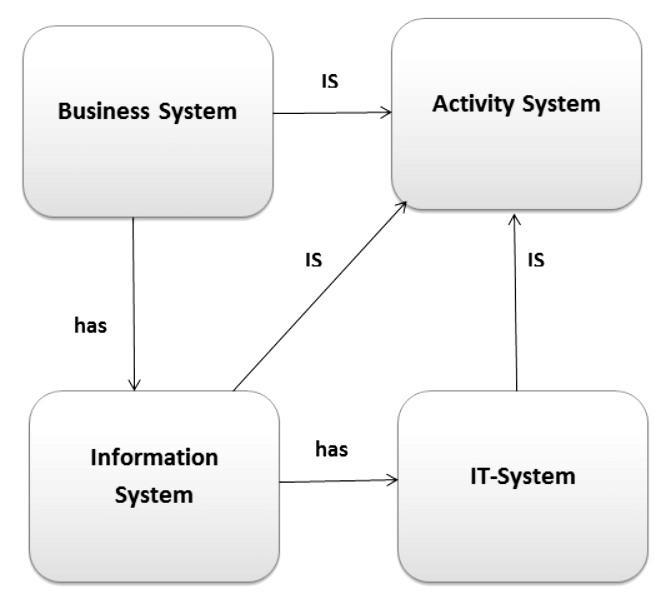Flexibility in information systems | Management Optional Notes for UPSC PDF Download
| Table of contents |

|
| Introduction |

|
| Understanding Flexibility: A Multifaceted Concept |

|
| Flexibility in Information Systems |

|
| Understanding IT Systems |

|
| Activity-Based Development |

|
| Conclusion |

|
Introduction
In the realm of information technology, the necessity for flexibility within Information Systems (IS) is paramount. An operational information system must possess the capacity to adapt to varying requirements inherent in supported business processes. While there exists a plethora of research on organizational flexibility, processes, and technological adaptability, consensus on the economics of flexibility remains elusive. In today's dynamic business landscape, organizations increasingly find themselves navigating through rapid changes, rendering traditional rigid structures and processes obsolete. To thrive amidst global competition, rapid technological advancements, and evolving customer demands, organizations must embrace flexible organizational designs and management practices.
The Role of Information Systems in Driving Flexibility
- Newer organizational structures, management methodologies, and business processes are enabling some companies to gain a competitive edge in their respective industries (Gunasekaran, et al., 2008). Information systems (IS) are recognized as significant contributors to organizational productivity and performance enhancement. Researchers have emphasized the development of flexible IS to accommodate the needs of agile organizations.
- For instance, in the telecommunications industry, the advent of market liberalization has led to rapid transformations. Today, technological convergence has accelerated change within the industry, driven by the delivery of bundled voice, data, and media services over a unified network. This environment is further shaped by alliances, mergers, and acquisitions, reshaping the industry landscape.
Understanding Flexibility: A Multifaceted Concept
- Flexibility is a term that encompasses various interpretations and applications across different contexts, ranging from individual entities like information systems, functional areas, to entire organizations. It can be perceived as both an inherent trait of an entity and as its capacity to adapt to anticipated or unforeseen changes within the organization or its environment. At its core, flexibility is often defined as the ability to adjust to new, differing, or evolving requirements, with a temporal aspect that questions the speed of response necessary for an entity to be deemed "flexible."
- Across numerous business disciplines such as economics, organizational studies, decision theory, manufacturing, and information technology, flexibility has been a subject of extensive research. Scholars emphasize not only the importance of maintaining flexibility within information systems but also the need for organizations to actively seek opportunities in their environment and utilize various concepts and tools to leverage flexibility for achieving organizational success.
- Technical studies reveal flexibility as a latent construct, a characteristic of an information system not directly observable during runtime. Structural and process flexibility emerge as the two primary dimensions, with structural flexibility referring to inherent characteristics of information systems like modularity and adaptability, while process flexibility pertains to an organization's ability to adjust information systems to new circumstances, encompassing skills such as programming and change management.
Golden and Powell identify four key metrics of flexibility based on research literature (2000):
- Efficiency: The ability to minimize performance degradation within a defined range.
- Responsiveness: The temporal dimension of flexibility, describing the speed of response to change stimuli.
- Versatility: The organization's preparedness and capability to respond to environmental changes.
- Robustness: The capacity of a system to remain responsive amidst unexpected environmental changes.
Each metric offers insights into different aspects of flexibility, ranging from operational efficiency to adaptability in dynamic environments, providing a comprehensive framework for evaluating and enhancing flexibility within organizations.
Flexibility in Information Systems
- Defined as the intricate network of people, data, processes, and IT components and their interplay necessary for accomplishing organizational tasks (Jacome, L. 2007), information system flexibility empowers organizations to retain control and adapt to continual shifts in hypercompetitive, swiftly changing environments. Theoretical research suggests a parallel between the relationships of flexibility and efficiency in information systems and manufacturing systems. Silver (1991), for instance, highlighted that both an excessively flexible and a highly restrictive design of a decision support system can hinder its use and consequently, its success.
- While a highly restrictive decision support system confines users to specific procedures, inhibiting the utilization of others, an overly flexible system can overwhelm inexperienced users. Soh, Sia, Boh, and Tang (2003) suggested that enhancing the flexibility of an enterprise resource planning system increases complexity.
Understanding Information Systems:
- Many technical experts conceptualize an information system as an activity system where all activities revolve around information. These systems register, store, manipulate, and present information pertinent to a domain of interest, facilitating actors in their tasks (Checkland and Holwell 1998). Information systems play a significant role not only in informational tasks but also in material and coordination activities. Some are deeply integrated into material business activities, becoming an integral part of the business activity system rather than mere supporters.
- An information system performs crucial business activities and supports actions performed by other information systems or human actors. They transcend mere IT systems, as essential information activities are carried out by humans, with IT systems programmed and managed by them.
Understanding IT Systems
- An IT system is a type of information system where all components are IT actors. An IT actor is a comprehensible unit comprising software and hardware, encompassing sensors, actuators, memory, and functionalities. These actors utilize sensors to gather information about their surroundings, such as specific events or measurement values. Memory is employed to retain data about pertinent aspects of their past interactions. Through actuators, IT actors can exert influence on their environment by transmitting information or toggling switches, among other actions.
- IT actors are capable of conducting various activities, including modifying information or transferring it from one place to another. They are integral to computer games, internet-based platforms, and business intelligence systems, showcasing innovation across a spectrum from basic to sophisticated functions. Hence, the concept of IT actors is inclusive enough to encompass both rudimentary and advanced IT systems. While reactive IT actors can be specified using use cases, proactive ones, like web crawlers or business intelligence monitors, require different approaches.
- Many professionals conceptualize IT systems, information systems, and business systems as activity systems, wherein actors engage in various tasks. Business systems incorporate information systems, as segments of a business can be viewed as activity systems performing information-related tasks. Information systems, in turn, may comprise IT systems that execute information activities.
Perspective on information systems and their business context is depicted in the following Figure:

- A business must continually evolve to maintain the relevance of its range of actions. Achieving such evolution entails employing a combination of two strategies: adapting to the environment and enticing the environment by offering novel or enhanced activities. A considerable portion of a business's activities is carried out through information systems, which necessitates ongoing adjustments in tandem with business changes. Similarly, a significant subset of an information system's activities is executed by IT systems, requiring continual adaptation in response to business evolution.
 |
Download the notes
Flexibility in information systems
|
Download as PDF |
Activity-Based Development
- Numerous systems development methodologies are activity-based, advocating that information systems development should be grounded in an understanding of current and future business activities. Previous approaches such as Structured Analysis (De Marco, 1978) and ISAC (Lundeberg et al., 1978) utilize graphical flow models to represent present and future work activities. Multiview, for instance, combines detailed activity analysis from Soft Systems Analysis with Structured Analysis (Avison and Wood-Harper, 1990).
- Various techniques exist for activity modeling. Activity-based design, for example, models work actions and their interdependencies (Andersen, 2006). Action-based modeling, based on the language-action perspective (Agerfalk and Eriksson, 2004), is another method. However, from a flexibility and change perspective, these methods share a common limitation: they lack a business-level representation of the structure of information and IT systems that facilitates discussions of change in terms of business concepts. While they use work activities as foundations for developing information and IT systems, they don't advocate for aligning the system structure with the activities they perform or support.
- When a business adapts to change, decisions regarding information system adjustments are made in business terms such as actors and activities. If the information system isn't structured around such concepts, there will be a disconnect between business intentions regarding change and the actual system changes required. It's argued that information systems should be structured around business actions, characterizing IT systems as activity systems in which information technology executes information activities.
- Activity systems involve players performing actions to generate value for customers and owners (Checkland, 1981), which can manifest in terms of products or services (Alter, 2006). These systems consist of interconnected actors, entities, and information. While "actors" can refer to both humans and IT systems, they execute actions and interact with one another, creating and exchanging material and information objects, with or without tool support.
- Continuous change processes are essential for maintaining business relevance (Truex et al., 1999), focusing on IT systems, information systems, and work activities in other business segments.
- An information system's action repertoire determines the types of information activities it can undertake. If an information system is clearly structured in this manner, various activities such as transactions, business interactions, and services can be composed from this repertoire.
There are two types of IS flexibility:
- Flexibility for use encompasses the range of possibilities an information system provides until a major change is required.
- Flexibility to change refers to the potential adaptability of a given information system for further changes (Gebauer and Schober, 2006).
Research primarily focuses on flexibility for use concerning the functions of the information system, which can be determined by designers. Not all features need to be predetermined in IT products; these resources can enable uses not yet envisioned by developers (Knoll and Jarvenpaa, 1994). Inadequate flexibility of an information system to support a business process can limit system use, while excessive flexibility might impede usability and present unnecessary investment (Silver, 1991). The type of flexibility built into an information system impacts its performance, particularly regarding the extent to which it can be altered post-implementation.
Conclusion
Information system flexibility is considered a crucial indicator of information technology success. Organizations today operate in increasingly dynamic environments, necessitating the improvement of information system flexibility through adaptable IT infrastructure and adjustable application systems, a critical concern for IS managers. Information systems must be flexible to meet user requirements, particularly in evolving environments, and adequate flexibility can extend the life cycle of these systems while enhancing IT investment efficiency.
FAQs on Flexibility in information systems - Management Optional Notes for UPSC
| 1. What is flexibility in information systems? |  |
| 2. Why is flexibility important in information systems? |  |
| 3. How can flexibility be achieved in information systems? |  |
| 4. What are the benefits of having flexible information systems? |  |
| 5. What challenges may arise in achieving flexibility in information systems? |  |
























